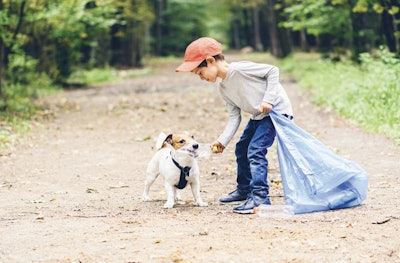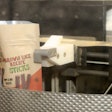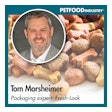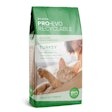
Sustainability seems destined to dominate the pet food world for at least the foreseeable future. In all aspects of the industry, “sustainability” — as a trend, as an idea, as a business strategy — continues to evolve, and no matter what the topic is, when top concerns are discussed, it’s the first thing mentioned. Pet food packaging, which continues to be one of the most visible areas consumers look toward when they think of sustainability and all its components (recyclability, reduction of materials, safety vs. eco-friendliness, etc.), is well aware of sustainability’s staying power.
Sustainability and pet food consumers
Packaging solutions company Mondi North America partnered with Dow Chemical to conduct a market study involving 751 premium pet food consumers across the U.S. in April 2021 to get their perspective on how current pet food packaging is performing in addressing their wants and needs.
“Sustainable packaging continues to be a key trend,” said Bill Kuecker, vice president of marketing, North America for Mondi. “Our research took a deep dive into what consumers mean by sustainability in this category and how they measure sustainability of pet food packaging. One data point that is certainly of interest was that 8% of consumers self-reported that they would definitely switch to a brand that had more sustainable packaging and 26% reported that they probably would.”
There’s no doubt that sustainable packaging of some sort is becoming a good business practice.
“Taking care of the earth has never been more important and in today’s climate, sustainable packaging can give you the edge over your competition,” said Adam Kay, sales director at UK-based Tyler Packaging, a company that aims to supply packaging engineered to minimize and ultimately achieve a net-zero contamination. “This could be by using recyclable or compostable materials, designing multi-use packaging or reducing the amount of packaging you use.”
How pet food packaging is responding
When it comes to packaging, a large facet of sustainability can only go so far as the technology currently exists to make it happen. That doesn’t stop everyone involved from continuing to ask for more, and that asking is part of what drives the creation of more options.
“Some of the biggest [consumer packaged goods(CPGs)], including pet food manufacturers, are setting ambitious sustainability goals to make their product packaging 100% recyclable or reusable by 2025,” said Braden Beam, bag filling and palletizing business unit leader for BW Flexible Systems, a global manufacturer of flexible packaging machines. “We’re seeing dry pet food brands that want to convert their product lines from the standard poly-woven bags to recyclable paper bags. This is challenging because while we know that the current bags are robust enough to survive the packaging and distribution process, that same empirical evidence doesn’t yet exist for these new recyclable bags. This is one of the reasons we work so closely with material suppliers; to test and verify that they can be implemented with consistent quality at the desired production rates.”
There is work to be done, but that doesn’t mean there aren’t options now. Packaging companies are doing their best to meet the challenges head-on, both with what’s already available and with new technologies.
“Sustainable packaging includes recyclable paper and mono-material packaging, packaging with post-consumer resin (PCR) or renewable resin, and even compostable packaging options,” said Dave Macdonald, vice president of sales for ProAmpac, a global flexible packaging company. “Rigid replacement is also trending to reduce overall packaging and virgin resin required, along with the associated energy and emissions that come with using more packaging materials.”
ProAmpac has taken a three-pronged approach to sustainability, called ProActive Sustainability, focusing not only on its products but also within the company’s own operations and among the communities it serves. It’s a prime example of the evolution of sustainability from a consumer perspective as well as a business perspective: It’s not enough to have recyclable packaging or an eco-friendly mission statement; the goal now is to incorporate sustainability into every aspect of pet food from start to finish.
The future of sustainability in packaging
According to the U.S.-based Sustainable Packaging Coalition’s 2020–2021 Centralized Study on Availability of Recycling, 91% of U.S. residents have access to either curbside and/or drop-off recycling programs that accept packaging materials. And while what materials they can recycle vary (see Figure 1: a majority have access to steel food can recycling, for example, but access to aluminum foil and foil packaging recycling is much more exclusive), the desire is there, to recycle and to do much more.

Figure 1: One of the challenges in sustainable packaging can be found at the consumer end: different materials are varying degrees of easy or difficult to recycle properly.
Sustainability is here to stay, and continuing to implement ideas that make sense for pet food packaging should probably be, at this point, part of “business as usual.”
















